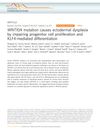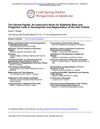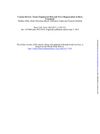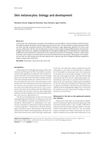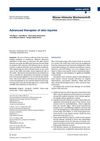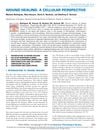Tissue Engineering of Skin and Regenerative Medicine for Wound Care
January 2018
in “
Burns & Trauma
”
TLDR Current skin substitutes help heal severe burns but don't fully replicate natural skin features.
The document reviewed advancements in tissue engineering and regenerative medicine for wound care, focusing on engineered skin substitutes to improve healing outcomes for severe skin injuries like burns. It categorized skin substitutes into acellular scaffolds, temporary substitutes with allogeneic cells, and permanent substitutes with autologous cells, noting that while these substitutes reduced morbidity and mortality, they did not fully replicate skin's structures and functions, lacking elements like pigmentation, vascular networks, and hair follicles. Future improvements were expected to integrate developmental biology to address these deficiencies. The research also explored gene therapies and robotic fabrication methods to enhance treatment effectiveness and availability. Despite challenges such as immune rejection and the need for vascularization, the study underscored the potential of these technologies to significantly improve wound healing and patient quality of life.
